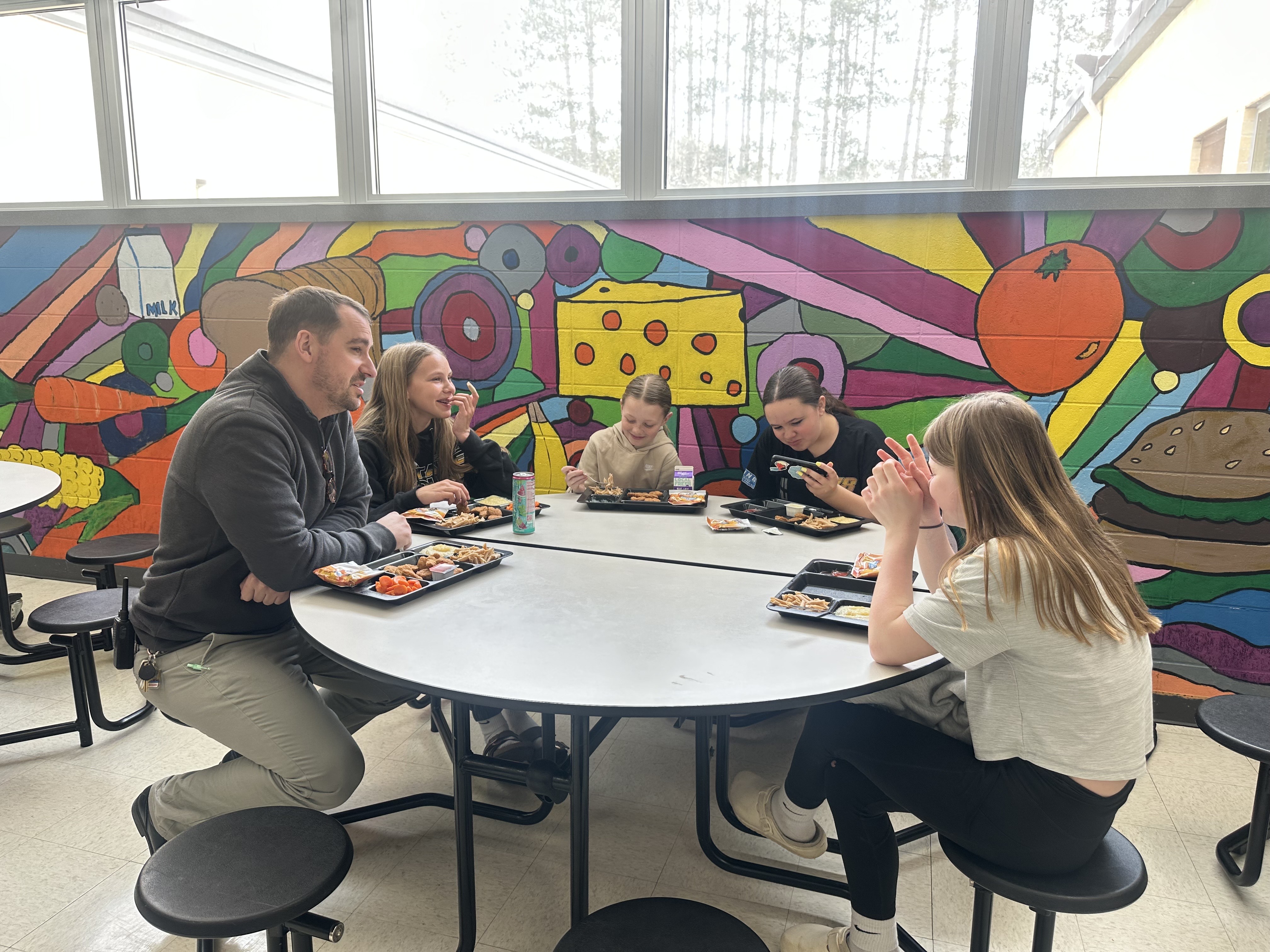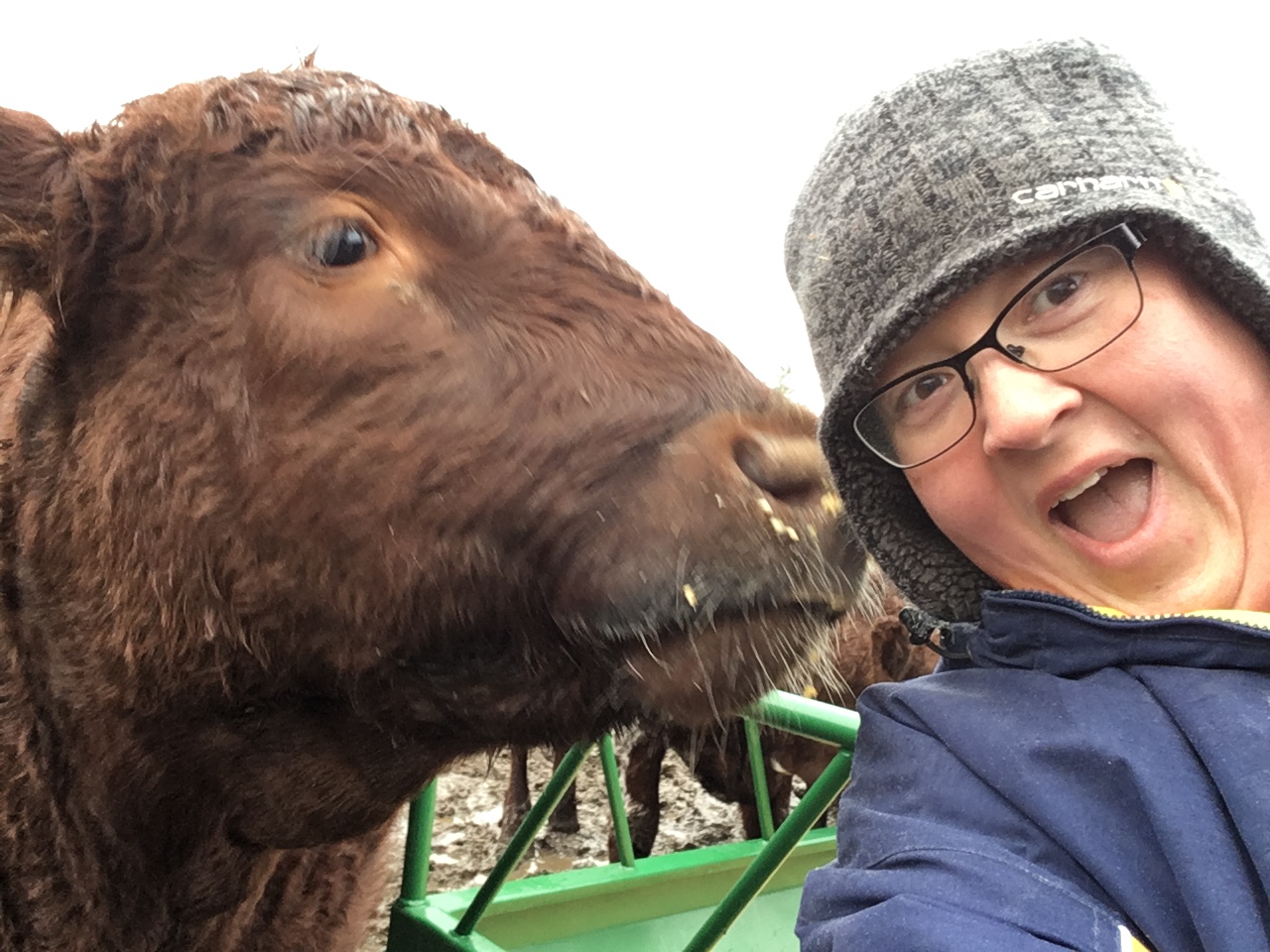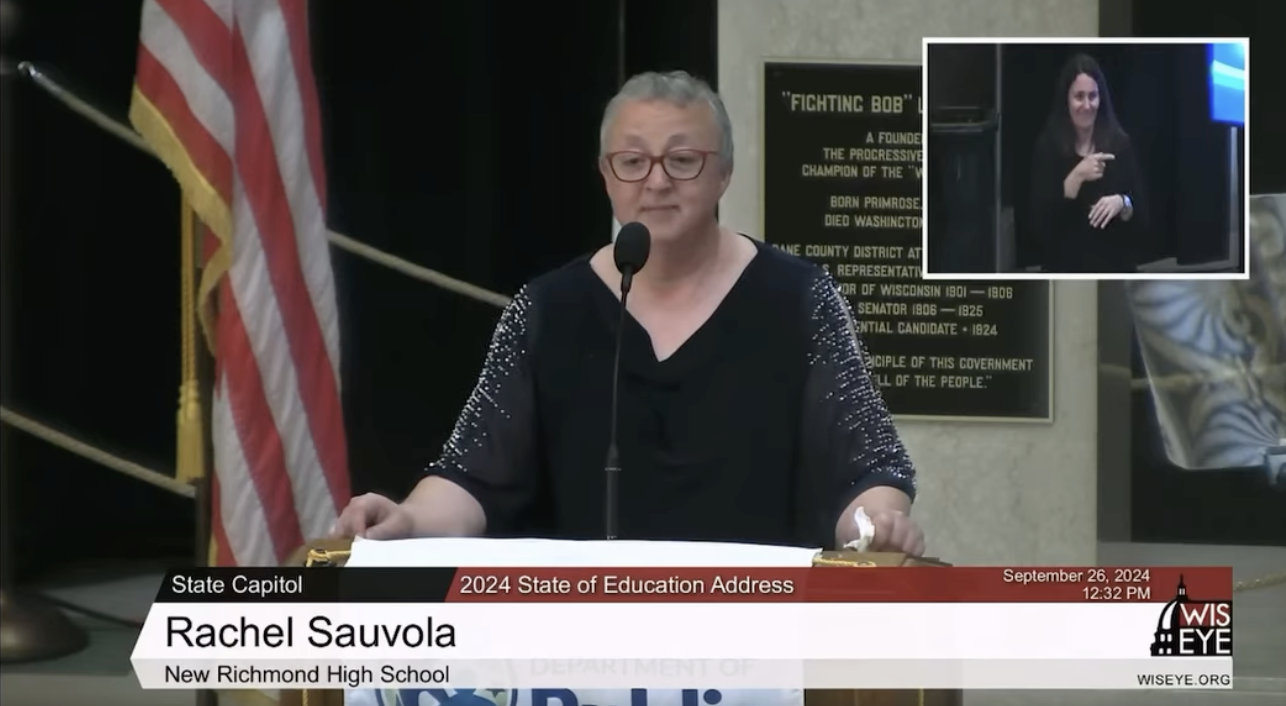Stories from Around the Table | Roz O'Reilly
By Evyn Appel, NFSN Policy Intern
With federal cuts putting the future of school meals at risk, stories from the farm to the lunch line remind us what we need to protect. In 2022, National Farm to School Network and our partner organizations launched the “Who’s at the Table” campaign to raise awareness about the importance of values-aligned school meals for all policies (also referred to as universal meals). This interview series features the stories of real individuals who play a role getting food from the farm to school cafeterias. We looked into the lives of people who identify as a policymaker, principal, school nutrition supervisor, teacher, parent, student, and food producer from states with universal meals policies or states with strong coalitions still advocating for a policy. Roz’s story underscores what we hear again and again: when every student has access to healthy, nourishing meals, schools and communities thrive.
Roz O’Reilly

Roz is a recent graduate of Orono High School in Maine. In addition to eating school lunch every day, Roz is on the Maine Youth Food Council where she helps to bridge the gap between climate justice and food systems. In the fall of 2026, Roz will be attending Macalester College in Minnesota to study data science.
Q: What is your relationship with the food system?
Roz: I interact with food and the food systems in a couple different ways. First and foremost as a direct consumer, directly. I eat school lunch. But I’m also looking at how to improve access to food for students through the school food system and that happens through my work on the Main Youth Food Council. This is my second year on the Council and the second year it's running. Climate justice and food insecurity, food sovereignty, all of the issues that relate to food are so closely connected. I am a part of a working group that is a collaboration between the Maine Food Convergence and Maine Youth for Climate Justice that is working to bridge the gap between the climate and food systems and sectors in Maine.
Q: What meals do you eat at school? And has that changed at all since school meals have been provided for free?
Roz: I now get lunch every day at school, but growing up, I never got school lunch. But when I realized that the school lunch was free, I was like, “Oh, why wouldn't I eat school lunch?” Another barrier is that I'm gluten free. And before universal meals, I didn't know that they made school lunch accessible for people who are gluten free. When I had those two realizations I thought, “Why haven't I been doing this sooner?”
Q: What is your favorite school meal?
Roz: There are so many good meals, oh my gosh! Well, a favorite is the chicken bacon ranch flatbread, that is a staple. We have a chef as our school nutrition director, and so that definitely comes into play because he gets really creative. But my favorite, honestly, is the comfort food, like the chicken penne pasta. He just does it so well, and it's gluten free, which is so exciting!
Q: Did your friends and peers have a similar experience? Did you notice a difference in school meal participation once meals were free to everyone?
Roz: There was a huge switch. Before, all of my friends would get to the lunch table and bring their lunchboxes out. Suddenly, everyone started getting school lunch when it became free. I think part of the reason that I also started getting lunch at school is because I realized, well, everyone else is doing it. If I look around in the cafeteria, I would say it’s probably at least maybe 60-75% of people get lunch from school. Before, when I think back, it might have been like 30-40%. And everyone talks about lunch now, lunch is a hot topic. “What's on the menu today?”
Q: Before the change, did you ever notice a negative connotation or stigma with getting a school lunch? Why wasn’t it as popular?
Roz: In my elementary school, the culture was: if you got school lunch, you weren't cool. You needed it, your parents didn't pack you the fruit roll-ups and the gummy bears—that was what getting a school lunch meant. There was a very sharp distinction between the two, but now, eating school lunch has become so much more normalized.
I do think there was an increase in breakfast participation. Now, there are a considerable amount of kids who will go and get breakfast during the first block, which is really nice. We also have breakfast after the bell, and so people will go and get breakfast when they're hungry during the first and second block classes. Because, again, if I'm hungry and there's an option to satiate my needs, why wouldn't I go eat? But I would not say school breakfast participation increased to the extreme that the lunch participation has increased.
Q: Does your school buy food from local farms?
Roz: As part of a class project, I chose to focus on local food in schools in the context of recent federal cuts. I worked with my school nutrition director, and we had a discussion first about the accessibility of local food and sourcing it across the school lunch menu. My school nutrition director takes advantage of the Maine Local Foods Fund. The fund was put into place in 2021, and that fund reimburses schools $1 for every $3 spent on local food.
We did a deep dive into what it looks like to actually source a fully Maine meal. You have $4.54 to spend per student for lunch and it costs $7.99 to source an entire Maine meal. Even after getting the subsidy from the Maine Local Foods Fund, it's still $1.38 over budget. From our conversation, it was clear that he wants to support more local. He has relationships with these farmers but he also has to balance the fact that he doesn't have the resources to always support them.
Something else that came up in our conversation that is more related to student education through the cafeteria. He has to take into consideration when weighing whether or not to invest in trying out a new local food, what the students' perception will be… Many students are out of touch with what local food is. It's different. It's not the perfectly round apple or the super plump grapes, and they're not used to it. And so there’s more that needs to be done to make them interested in trying new foods. We need funding for education and to support buying more local foods.


.jpeg)


.png)
.png)
.png)
.png)